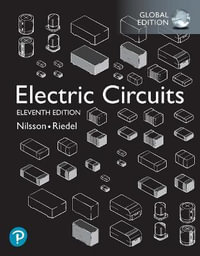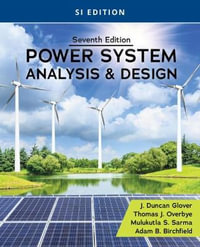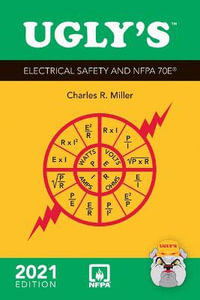| List of abbreviations | p. xiii |
| List of symbols | p. xv |
| Series preface | p. xxi |
| Preface | p. xxiii |
| Introduction | p. 1 |
| The energy chain | p. 1 |
| Definition of a Battery Management System | p. 3 |
| Motivation of the research described in this book | p. 4 |
| Scope of this book | p. 5 |
| References | p. 6 |
| Battery Management Systems | p. 9 |
| A general Battery Management System | p. 9 |
| Battery Management System parts | p. 10 |
| The Power Module (PM) | p. 10 |
| The battery | p. 14 |
| The DC/DC converter | p. 18 |
| The load | p. 19 |
| The communication channel | p. 19 |
| Examples of Battery Management Systems | p. 22 |
| Introduction | p. 22 |
| Comparison of BMS in a low-end and high-end shaver | p. 22 |
| Comparison of BMS in two types of cellular phones | p. 25 |
| References | p. 29 |
| Basic information on batteries | p. 31 |
| Historical overview | p. 31 |
| Battery systems | p. 33 |
| Definitions | p. 33 |
| Battery design | p. 35 |
| Battery characteristics | p. 36 |
| General operational mechanism of batteries | p. 43 |
| Introduction | p. 43 |
| Basic thermodynamics | p. 44 |
| Kinetic and diffusion overpotentials | p. 45 |
| Double-layer capacitance | p. 50 |
| Battery voltage | p. 52 |
| References | p. 52 |
| Battery modelling | p. 55 |
| General approach to modelling batteries | p. 55 |
| Chemical and electrochemical potential | p. 58 |
| Modelling chemical and electrochemical reactions | p. 59 |
| Modelling mass transport | p. 67 |
| Modelling thermal behaviour | p. 82 |
| A simulation model of a rechargeable NiCd battery | p. 86 |
| Introduction | p. 86 |
| The nickel reaction | p. 89 |
| The cadmium reactions | p. 92 |
| The oxygen reactions | p. 97 |
| Temperature dependence of the reactions | p. 102 |
| The model | p. 103 |
| A simulation model of a rechargeable Li-ion battery | p. 107 |
| Introduction | p. 107 |
| The LiCoO2 electrode reaction | p. 108 |
| The LiC6 electrode reaction | p. 113 |
| The electrolyte solution | p. 117 |
| Temperature dependence of the reactions | p. 118 |
| The model | p. 118 |
| Parameterization of the NiCd battery model | p. 124 |
| Introduction | p. 124 |
| Mathematical parameter optimization | p. 126 |
| Results and discussion | p. 131 |
| Quality of the parameter set presented in section 4.4.3 under different charging conditions | p. 138 |
| Results obtained with a modified NiCd battery model and discussion | p. 144 |
| Simulation examples | p. 149 |
| Simulations using the NiCd model presented in section 4.2 | p. 149 |
| Simulations using the Li-ion model presented in section 4.3 | p. 155 |
| Conclusions | p. 162 |
| References | p. 165 |
| Battery charging algorithms | p. 169 |
| Charging algorithms for NiCd and NiMH batteries | p. 169 |
| Charging modes, end-of-charge triggers and charger features | p. 169 |
| Differences between charging algorithms for NiCd and NiMH batteries | p. 175 |
| Simulation example: an alternative charging algorithm for NiCd batteries | p. 177 |
| Charging algorithm for Li-ion batteries | p. 184 |
| The basic principle | p. 184 |
| The influence of charge voltage on the charging process | p. 186 |
| The influence of charge current on the charging process | p. 187 |
| Simulation example: fast charging of a Li-ion battery | p. 188 |
| Conclusions | p. 191 |
| References | p. 192 |
| Battery State-of-Charge indication | p. 193 |
| Possible State-of-Charge indication methods | p. 193 |
| Definitions | p. 193 |
| Direct measurements | p. 195 |
| Book-keeping systems | p. 199 |
| Adaptive systems | p. 202 |
| Some remarks on accuracy and reliability | p. 203 |
| Experimental tests using the bq2050 | p. 204 |
| Operation of the bq2050 | p. 204 |
| Set-up of the experiments | p. 206 |
| Results and discussion | p. 208 |
| Conclusions of the experiments | p. 211 |
| Direct measurements for Li-ion batteries: the EMF method | p. 212 |
| Introduction | p. 212 |
| EMF measurement methods | p. 212 |
| Measured and simulated EMF curves for the CGR17500 Li-ion battery | p. 214 |
| Conclusions | p. 219 |
| A simple mathematical model for overpotential description | p. 219 |
| Proposed set-up for State-of-Charge system | p. 225 |
| The algorithm | p. 225 |
| Comparison with the bq2050 system | p. 229 |
| Comparison with systems found in the literature | p. 230 |
| Experimental tests with the system proposed in section 6.5 | p. 231 |
| Introduction | p. 231 |
| Set-up of the experiments | p. 231 |
| Experimental results | p. 232 |
| Discussion of the results | p. 235 |
| Conclusions of the experiments | p. 237 |
| Conclusions | p. 238 |
| References | p. 239 |
| Optimum supply strategies for Power Amplifiers in cellular phones | p. 241 |
| Trends in cellular systems | p. 241 |
| The efficiency control concept | p. 245 |
| Basic information on Power Amplifiers | p. 246 |
| Optimum supply voltage for optimum efficiency | p. 250 |
| DC/DC conversion principles | p. 251 |
| Linear voltage regulators | p. 252 |
| Capacitive voltage converters | p. 253 |
| Inductive voltage converters | p. 255 |
| EMI problems involved in capacitive and inductive voltage converters | p. 258 |
| Inductive voltage conversion for efficiency control | p. 258 |
| Simulation model derivation | p. 258 |
| DC/DC down-converter | p. 258 |
| Power Amplifier | p. 260 |
| Theoretical benefits of efficiency control | p. 261 |
| Simulation set-up | p. 262 |
| Results and discussion | p. 263 |
| Conclusions | p. 265 |
| Experimental results obtained with a CDMA PA | p. 266 |
| Measurement set-up | p. 266 |
| Measurement results and discussion of part 1: no DC/DC converter | p. 267 |
| Measurement results and discussion of part 2: with DC/DC converter | p. 269 |
| Estimation of talk time increase in a complete CDMA cellular phone | p. 271 |
| Application of efficiency control in a GSM cellular phone | p. 274 |
| GSM power control protocol | p. 274 |
| Modifications in the Spark GSM phone | p. 276 |
| Measurement results and discussion | p. 279 |
| Conclusions of the experiments | p. 281 |
| Conclusions | p. 281 |
| References | p. 282 |
| General conclusions | p. 285 |
| About the authors | p. 289 |
| Index | p. 291 |
| Table of Contents provided by Ingram. All Rights Reserved. |

























